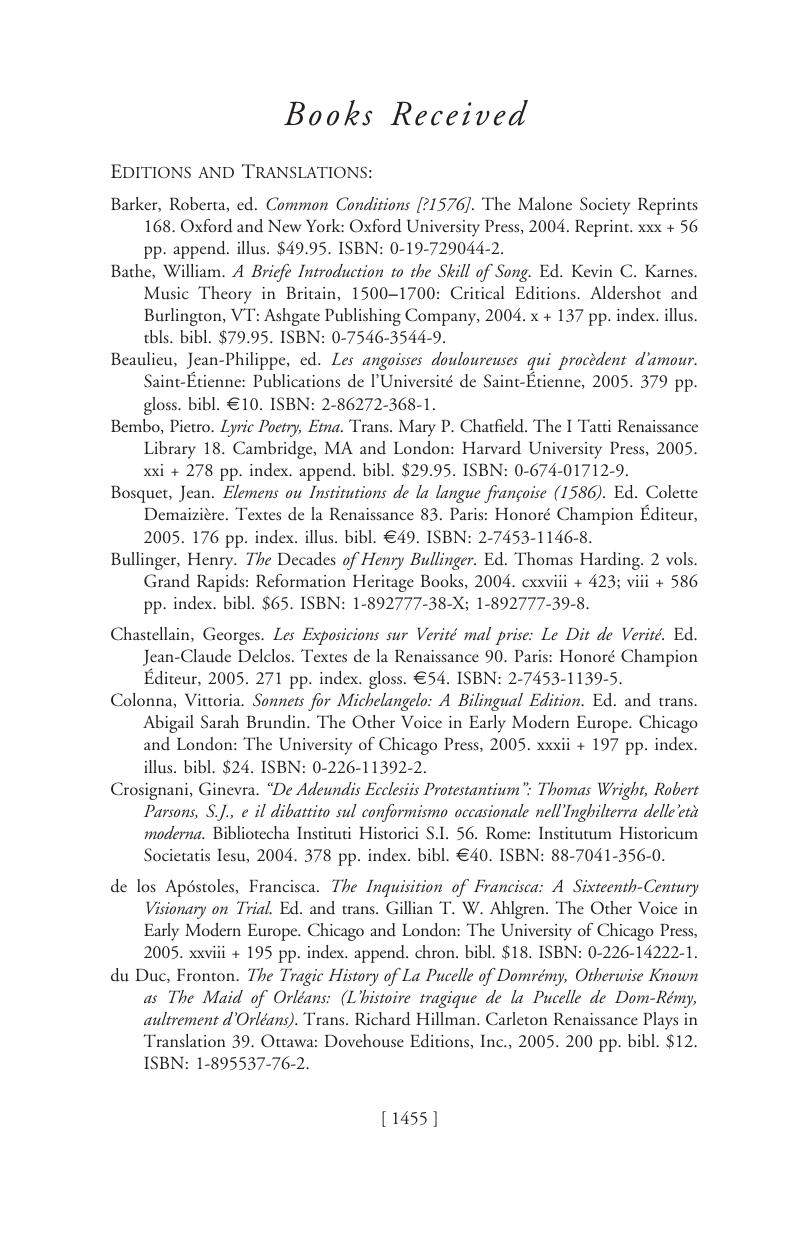Stephen N., Fliegel , and,
Jugie, Sophie , eds.
Art from the Court of Burgundy: The Patronage of Philip the Bold and John the Fearless 1364–1419. Musée des Beaux-Arts, Dijon.
Cleveland :
The Cleveland Museum of Art ,
2004. 367 pp. illus. chron. bibl. $55. ISBN:
2-7118-4864-7.
Includes: Renaud Donnedieu de Vabres, François Rebsamen, and Katharine Lee Reid, “Preface”; Stephen N. Fliegel and Sophie Jugie, “Foreword”; Stephen N. Fliegel, “The Collecting of Valois Burgundian Art in the United States”; Bertrand Schnerb, “The Dukes of Burgundy and the Burgundian Principalities (1361–1419)”; Sophie Jugie, “The Dukes of Burgundy: Princes of Paris and the Fleur-de-lis”; Ludovic Nys, “Art in the Court of Flanders at the Time of the Marriage of Philip the Bold and Margaret de Male”; Bertrand Schnerb, “The Piety and Worship of Philip the Bold and John the Fearless”; Fabrice Rey, “Princely Piety: The Devotions of the Duchesses, Margaret of Flanders and Margaret of Bavaria (1369–1423)”; Gaëlle Tarbochez, “The Furnishings of the Ducal Chapel”; Laurent Hablot, “The Use of Emblems by Philip the Bold and John the Fearless”; Sylvain Faivre and Sophie Jolivet-Jacquet, “Ephemeral Art: Ceremonial Dress and Decor at the Court of Burgundy”; Sophie Cassagnes-Brouquet, “Artists to the Dukes of Burgundy”; Philippe Lorentz, “The Painters of Philip the Bold and John the Fearless in Dijon”; Claudine Lemaire, “The Burgundy Library”; Fabrice Rey, “The Tapestry Collections”; Élisabeth Taburet-Delahaye, “Gold and Silver”; Patrice Bek, “The Ducal Residences: Architecture as the Theater of Power”; Sophie Cassagnes-Brouquet, “Decor of the Ducal Residences”; Patrice Beck, “The Royal Residences in Dijon”; Céline Berrette, “The Beaune Mansions: Ducal Residences?”; Michel Maerten, “The Germolles Château”; Emmanuel Laborier, “Montbard, a Capetian Fortress for the Duchesses”; Georges Frignet, “The Château de Rouvres”; Priscilla Debouige, “Philip the Bolds Ch âteau at Argilly (1363–1404)”; Philippe Plagnieux, “The Artois Mansion: Paris Residence of John the Fearless”; François Duceppe-Lamarre, “The Ducal Residence at Hesdin and its Place in Courtly Art under Philip the Bold and his Son (1384–1419)”; Vincent Tabbagh, “Introduction: Religious Institutions Founded by the Dukes”; Renate Prochno, “The Origins and History of the Chartreuse”; Sherry C. M. Lindquist, “The Organization of the Construction Site at the Chartreuse de Champmol”; Renate Prochno, “The Portal”; “The Church and Its Interior Plan”; “The Chapels”; Sophie Jugie, “Painting”; Marie-Françoise Damongeot-Bourdat, “The Manuscripts of the Chartreuse de Champmol”; Renate Prochno, “The
Well of Moses”; Sophie Jugie, “The Tomb of Philip the Bold”; Renate Prochno, “Funerary Customs”; “Influences”; Vincent Tabbagh, “Art Patrons in Burgundy (1360–1420)”; Sabine Witt, “The Statuary of Poligny: Foundations and Court Art in Franche-Comté”; Sandrine Roser, “Baume-les-Messieurs ”; Sophie Cassa-gnes-Brouquet, “Atelier Activity and the Status of Artists”; Sophie Jugie, “Painting in Burgundy”; Virginie Inguenaud, “Notes on Some Burgundian Painted Wall Decorations”; Denise Borl ée, “Sculpture in Fourteenth-Century Burgundy”; Véronique Boucherat, “A New Approach to the Sculpture of Claus de Werve”; Céline Vandeuren-David, “Metalwork and Metalworkers under Philip the Bold and John the Fearless: Dijon”; and Sophie Jugie, “Artists Biographies.”
Google Scholar 